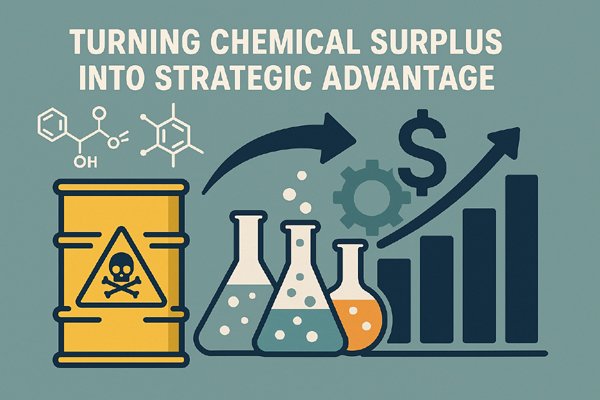Surplus Chemicals offers a compelling pathway for companies to turn excess or near-expiry chemical stocks into profitable, eco-friendly opportunities while streamlining operations.
Unlocking Hidden Value
Many manufacturers suddenly find themselves holding surplus specialty chemicals, ranging from solvents and resins to pigments, adhesives, and pharmaceutical-grade agents, due to production shifts, off‑spec batches, or over-ordering. Left unchecked, such stock can tie up warehouse space, rack up disposal costs, and pose environmental and regulatory risks. Yet these materials still hold intrinsic value. By tapping into a specialised surplus marketplace, companies can transform idle inventory into working capital.
The Surplus Chemicals Advantage
Surplus Chemicals specializes in collecting and repurposing surplus chemical inventory, encompassing out-of-date, off-spec, or underutilized batches, and matching these with suitable buyers. Through this process, sellers not only recover costs and free up valuable storage, but they also sidestep hefty waste-handling and disposal fees. Buyers, in turn, gain access to high-quality products at reduced prices, a dual win that boosts both financial performance and sustainability.
Cost Savings and Efficiency
Selling surplus inventory enables manufacturers to reclaim financial value previously locked in excess stock. Likewise, buyers can significantly reduce raw material costs by sourcing high-grade chemicals through surplus channels. For example, surplus sodium percarbonate or silicon dioxide offer stable performance for cleaning and solvent applications, at a fraction of the usual procurement cost.
Beyond pricing benefits, firms eliminate the need to maintain suboptimal stock and can prevent quality degradation over time, a common risk with long-term storage.
Sustainability and Corporate Responsibility
Redirecting surplus chemicals into productive reuse supports circular economy principles and reduces environmental impact. With chemical yield in typical processes often below 50%, recovery and reuse are critical for reducing waste, an area where industry still lags, with solvent recovery rates as low as 0.7% in the U.S. By partnering with Surplus Chemicals, companies can proudly showcase environmental stewardship, maintain regulatory compliance, and bolster green credentials.
Real-World Applications
- Solvents: Commercial solvents, when redirected to the surplus market, offer buyers cost-effective access while freeing up warehouse space for sellers.
- Specialty Polymers and Resins: Materials like polyethylene terephthalate (PET) and polyacrylamide see renewed value when traded through surplus channels.
- Pharma and Fine Chemicals: High-value items such as sodium starch glycolate and Opadry Blue coatings gain new life via surplus trading. A pharmaceutical producer can convert excess coating into profit, while the buyer’s production costs fall, driving a positive environmental and economic ripple.
Process and Compliance
Surplus Chemicals offers end-to-end service: assessing usability, certifying quality, arranging logistics, and managing paperwork to meet standards like REACH, ISO, and GHS. This turnkey support ensures transactions are efficient, transparent, and compliant, reducing administrative burden on both sellers and buyers.
A Competitive Edge in a Tight Market
In industries where margins are razor-thin, repurposing surplus chemicals can offer a critical edge. Whether you’re managing costs, meeting ESG targets, or optimizing supply chains, this strategy supports long-term resilience. Companies that act now position themselves as forward-thinking, efficient, and environmentally responsible, qualities that resonate with today’s partners, investors, and customers alike.
Conclusion
By aligning financial objectives with sustainability goals, Surplus Chemicals facilitates a smarter, greener chemical economy. Companies can optimize assets, reduce liabilities, and strengthen their sustainability narrative, all while supporting regulatory compliance and operational efficiency. Leveraging excess stock to drive new value turns a cost center into a strategic asset, benefiting not just individual firms but the broader ecosystem as well.
Follow – https://businessbymoney.com for More Updates

